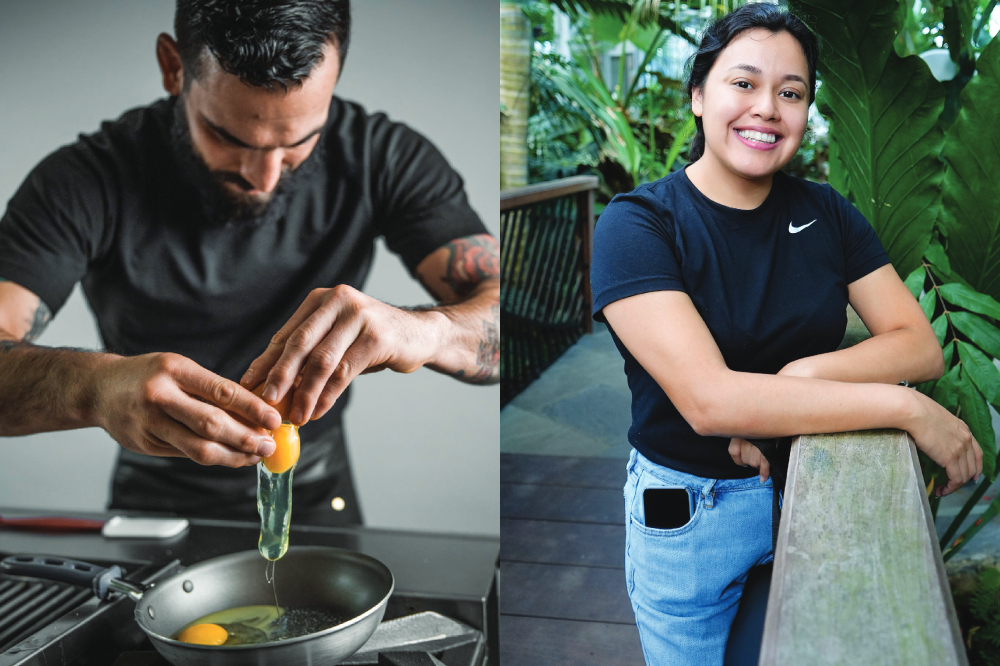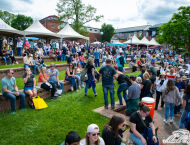Eat
 L to R. Carlos Raba. Photo courtesy of subject. Yicela Alvarado. Photo by William Martinez.
L to R. Carlos Raba. Photo courtesy of subject. Yicela Alvarado. Photo by William Martinez.
Global Appetite: How Food Binds my Mexican Community to its Roots
February 1, 2023 @ 10:00am
For immigrants living in the U.S., preserving native culture is a constant challenge. Systemic structures of assimilation built into American society often make it difficult for immigrants to openly share their identities. Simultaneously, customs and traditions are slowly erased as people are urged to fit in by acting, looking and sounding more “American.”
Like many fellow Mexicans, I faced those obstacles. In 1991, searching for opportunities and a better life, my mother transplanted us from Chihuahua, Mexico to El Paso, Texas; my grandparents followed soon after. Though our family received plenty of benefits from this move, many of our customs began to fade.
However, traditions around food endured.
There was a time when I sat around the dinner table with my family in Chihuahua almost daily. My abuelita (grandmother) would cook warm, flavor-forward foods for us, relying on recipes passed down through generations. My family introduced me to dishes I still love more than anything else: puchero (rich beef and vegetable soup), cochinita pibil (achiote-rubbed pork braised in sour orange), and birria (tender goat stew seasoned with chiles and roasted tomatoes).
This food also became a way for my family to make money. My grandparents opened a Yucatan-style seafood restaurant, where I spent my teenage years dishwashing, doing prep work and bussing tables.
After growing up in the kitchen, my family pushed me to do anything but become a chef. I tried. But following a stint in international finance, I found my way back to restaurants. As a first-generation Mexican immigrant, searching for connection to my identity proved difficult, but food became a tether to my past. It helped me find a sense of belonging to a larger community.
However, my traditions aren’t static; they are constantly evolving. After marrying a Korean-Jewish woman, I created Mexican Chrismukkah, a new tradition where we open our home to friends and family in the style of a Mexican posada (inn). We make a welcome ponche de navidad (Christmas punch) loaded with tejocote, guava and hibiscus flowers with a boozy shot of piquete for the adults. For the table, we have giant platters of tamales stuffed with chicken in salsa verde, pork in chile colorado and a pot of pozole (guajillo broth with popped hominy, heavy with oregano). To honor my wife’s heritage, we serve both a mountain of latkes with applesauce and japchae (sweet potato noodles tossed with a rainbow of vegetables).
Moments like our Mexican Chrismukkah are a reminder that Mexican immigrants are not a monolith, despite some flawed and biased media depictions. While many of our stories share similar themes, we all take different paths to keep our traditions alive.
Carlos Raba, chef and partner of Baltimore’s Clavel, grew up in Sinaloa, Mexico with multiple generations of family close by. Raba’s family would often gather for big meals featuring oven-roasted pork loin, bacalao (prepared salt cod), atole (a hot drink made with corn masa) and buñuelos (thin, crispy fritters coated with cinnamon sugar).
Raba still makes tortillas de harina (flour tortillas), galletitas de nuez (Mexican wedding cookies), and ceviches (citrus-cured fish and seafood). But he and his wife are adding new American traditions to their repertoire, like running a turkey trot before gathering the family for a Thanksgiving feast of turkey and steaks at The Prime Rib in Baltimore.
Yicela Alvarado, co-owner of Columbia Heights staple Taqueria Habanero, says the idea of tradition is one of evolution. Though she and her sisters were born in the States, their family has roots in Tepazolco, a small farming town two hours away from Puebla City. Her father was a taquero (taco cook), while her mother sold antojitos (traditional Mexican snacks) on the street. Alvarado and her parents now gather for breakfast every morning — a time full of beloved routines, old and new.
“While my parents have their instant coffee and pan dulce, I join them with my espresso and kouign-amann,” she says. “We talk about our dreams and what is on the agenda for the day.”
At dinner, the table is often covered in foods connecting the family to its ancestors: tamales concealing chocolatey, well-spiced mole poblano; rajas con queso (roasted poblano in creamy, cheesy sauce); slow cooked black and pinto beans seasoned with avocado leaves; and corn tortillas filled with a tempting array of guisados (stews).
As I examine my own history and traditions and speak with others in my community, I am constantly reminded that understanding where we come from is imperative; it is the foundation on which our identities are built. Yet redefining and evolving what Mexican traditions can look like is essential to ensuring our culture remains vibrant and strong as we move forward.
Clavel: 225 W 23rd St. Baltimore, MD; barclavel.com // @bar_clavel
Taqueria Habanero: 3710 14th St. NW, DC; taqueriahabanero.com // @taqueriahabanero







